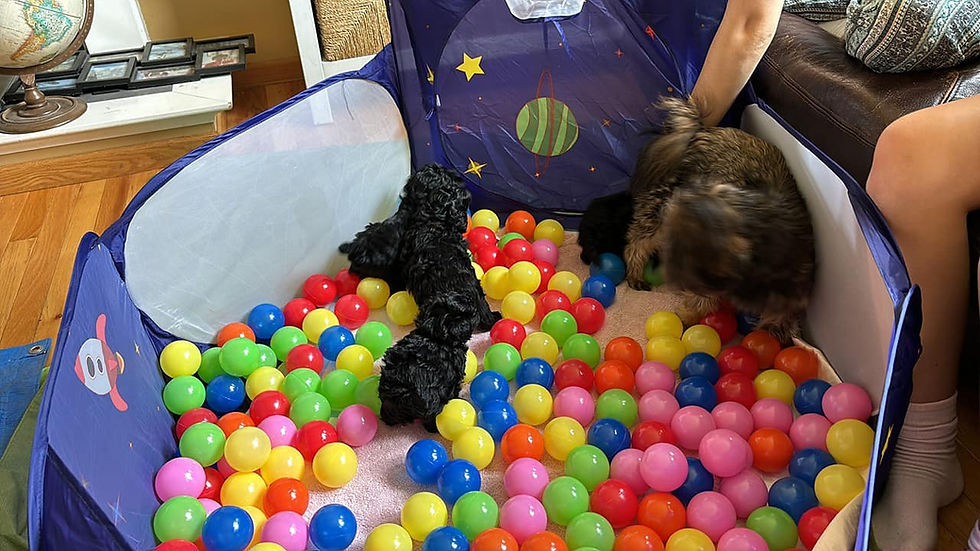Brachy Love - Breeding & Owning Flat Faced Dogs
- Anne Hendrickson
- Aug 9, 2024
- 3 min read

I have seldom seen anything in my life that is as adored and despised as Brachiocephalic (Flat Faced) Dogs. How does this happen? Well, because it is nature fighting nature.
Human Nature
“Brachy” dogs are CUTE. And the number one criteria for 69% of dog buyers is looks. So for that reason alone they are popular. But it is more than that. Brachy dogs have big eyes, round heads, and short muzzles. (Stops). This particular look elicits a chemical called Oxycontin to flow which promotes love and bonding. So we are neurologically and chemically drawn to them and they are easy to bond with. Additionally, many Brachy dogs have evolved for tens of thousands of years as house pets. So the sweetest and most endearing have survived. So our nature is promoting our love of brachy’s and their continued popularity.

Natural Selection
It is human nature to love brachys but it is not natural selection. At least not for health. We have strayed pretty far from the dog template with brachy breeds. Their face and frequently the rest of them isn’t very functional compared to a dog that actually had to hunt or herd to earn their keep.
“Pinched nostrils” happen because the face is too flat and the airways do not open. This has to be fixed surgically and must be quite uncomfortable for the animal. (Plug your nose for a while and see how you like it).
Other facial and breathing difficulties including cleft palates and snoring are not unusual. And because they have to have an under bite for their face and mouth to function at all, it can be too extreme causing issues with biting and cutting up their tongues.
So our nature is to want and love these dogs but we undermined natural development to make them. What can be done?

It’s OK to love and want Brachy dogs. They are adorable on the inside and out. But you do need to know how to care for them.
Caring for Brachy Dogs
Surgery - If your dog is uncomfortable due to breathing constraints you owe it to them to do surgery or whatever other medical interventions are needed to allow them the most comfort possible.
Heat - Because they can’t breathe as well as other dogs they can’t get rid of their heat as efficiently. Be extra cautious in warm weather.
Exertion - While many brachy dogs are spunky and athletic, be cautious about over exertion due to impaired breathing. If you have brachy & non brachy dogs in your household keep a higher radar on the brachys during hikes, outdoor play etc.
Eating/drinking - Because of their mouth shape it is best to feed them on a saucer or other flat surface. For water, be sure they can get their face in the water dish and that the water is deep enough that their tongue can’t reach the bottom of the bowl.
Eye irritation - Eye irritation is common due to the big eyes and “crevice” created at the stop (nose). Keeping the hair trimmed and daily eye wipes helps lessen irritation.
What about top knots? It is a lot easier to keep your dog's eyes clear if you keep their face trimmed short. But You can still manage your dog's eye irritation if you have hair grown out into a top knot. You can cut bangs and still do a top knot or just keep the muzzle and the corners of the eyes trimmed short.

Breeding
We keep creating brachy dogs because breeders and families alike love the breeds. And that is OK but there are some considerations that can help maximize their health and comfort.
Mixed Breeds. Crossing a “brachy” with a dog with a longer muzzle such as a Shih Tzu x Poodle cross gives a little more functional face without losing those big, sweet Oxycontin eyes.
I’m not a big fan of “one issue breeding” but breathing is kind of a big deal. There are some genetics and health screenings that can allow breeders to select for longer muzzles within the breed standard and screen for the risk of obstructive airway syndrome. Breeding away from the more problematic extremes can help improve comfort and health for the dogs you create.
The genetics of muzzle length are not fully understood for brachy breeds. But Embark DNA testing will tell you at least one gene affecting your dog's muzzle length. AC muzzles are a bit longer than AA but both usually in the breed standard for brachy breeds.
There is a new health screening, BOAS, being rolled out for Brachy breeds to assess respiratory function and obstructive airway syndrome.
Retire dogs that have or create breathing and face problems from your program.



Comments